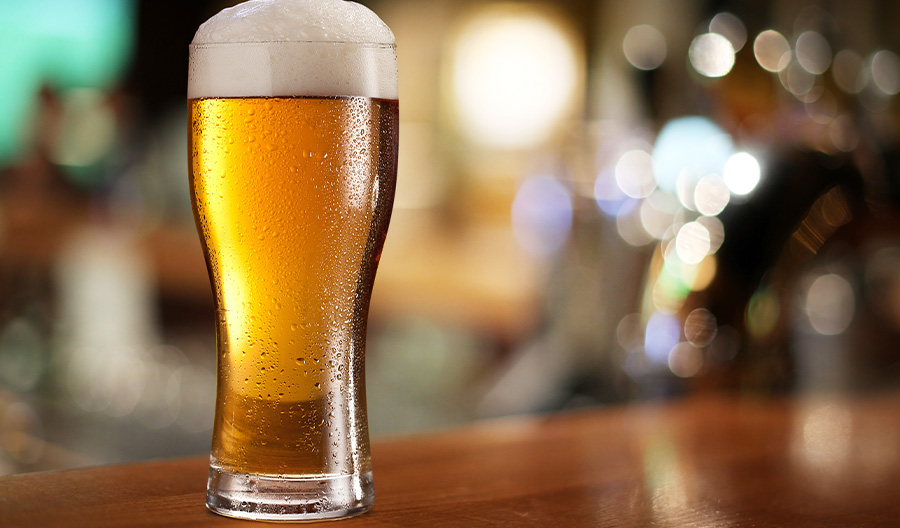The beer and cocktail worlds tend to orbit in separate universes, rarely meeting outside of a summer-day, but beer syrups, flavorful syrups made from beer and sugar as in simple syrup, are making a case for those worlds colliding.
Beer syrups can provide a bridge between worlds and they’re a great way to get a beer drinker to venture into the world of craft cocktails.
Tart sours, hoppy IPAs and easy lagers can all be whipped into a range of syrups. Beer syrups are great for adding a big pop of beer flavor in small doses and in drinks that you don't necessarily want to be a tall drink full of bubbles.
You’re able to utilize the very specific flavors in different styles of beers to complement a cocktail. This can really set your drinks apart in terms of complexity.

Pick Your Flavors
The world of beer is diverse. So which brew is best? Any and every, according to these bartenders—it’s all about personal preference.
Try super-flavorful beers in your syrup. IPAs, sours porters, and stouts work well. One mixologist's go-to recipe for a beer-based syrup calls for combining two cans of double chocolate stout with a half cup of raw sugar, a teaspoon of cherry extract and half a teaspoon of vanilla extract, rendering a rich and decadent drink.
Stout and porter syrups work well in Old Fashioneds, flips and drinks with egg or cream. Use a dark sugar like demerara or muscovado to lean into the spice notes. For cocktails incorporating these syrups, try to stay away from lemon and lime juice; instead, lean further into the chocolate and coffee notes. These flavors go extremely well with aged spirits such as rum, whiskey and añejo tequila.
Tips from the Pros
While the syrups are relatively easy to make, there are a few things to keep in mind. Namely, don't boil your syrup, just heat it enough to melt your sugar and quickly remove it from the heat.
Much in the same way you would make any other type of syrup, the only thing you want to be sure of is that when heating the ingredients, do it over low heat and try not to over-whisk, or else the outcome may look more like an elementary school science experiment. Start with an even one-to-one ratio. Then begin to build your own recipe based on the outcome. Try modifying the flavor profiles using different types of sugar or sweetening agents, or take it a step further and try using fresh fruits, vegetables or herbs. The possibilities are endless.
Before making the syrup, crack open the beer and letting it sit for a while. The issue with a beer syrup is you are dealing with foam and carbonation, which don’t react well to heat. Let the beer go flat before heating it to make a syrup. Porters and stouts, and beers that are less volatile, are easier to work with. Mixologists have also had success making the syrups via sous vide and low temperatures.
Once you master these details, the possibilities are vast. One bartender that makes a variety of beer syrups likes to use her IPA syrup in a Julep with peaches and bourbon, while her sour beer syrup adds depth to a Shandy variation. She also adds a quarter-ounce of sour beer syrup to sours using gin, vodka or aquavit. For her part, Mix loves making syrups from hazy beers, which she finds work well in a cocktail with bourbon, lemon juice and a splash of Cynar.

